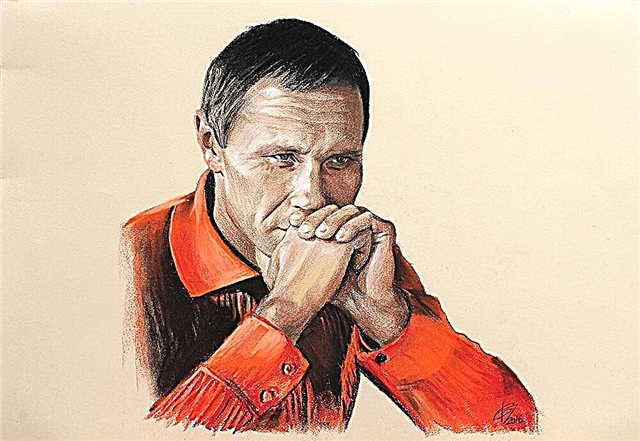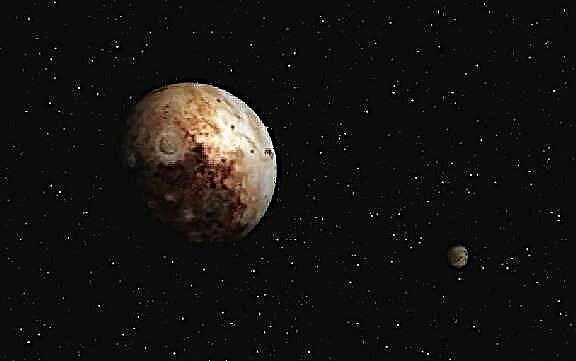Asteroids look like an excellent illustration of the advancing development of mathematics. While astronomers were looking at the starry sky, haphazardly fixing stars and planets and calculating their interactions and orbits, mathematicians figured out what to look for and where exactly.

After the discovery of some minor planets, it turned out that some of them can be seen with the naked eye. The first asteroid was discovered by accident. Gradually, methodical research led to the discovery of hundreds of thousands of asteroids, this number increasing by tens of thousands a year. More or less comparable to terrestrial objects - in comparison with other celestial bodies - sizes allow thinking about the industrial exploitation of asteroids. Several interesting facts are associated with the discovery, further study and possible development of these celestial bodies:
1. According to the Titius-Bode rule that dominated in astronomy in the 18th century, a planet should have been located between Mars and Jupiter. Since 1789, 24 astronomers, led by the German Franz Xaver, have been conducting coordinated, targeted searches for this planet. And the luck to discover the first asteroid smiled on the Italian Giuseppe Piazzi. Not only was he not a member of the Xaver group, but he was not looking for anything between Mars and Jupiter. Piazzi discovered Ceres at the very beginning of 1801.

Giuseppe Piazzi put the theorists to shame
2. There are no fundamental differences between asteroids and meteoroids. It's just that asteroids are more than 30 m in diameter (although most of the small asteroids are far from spherical), and meteoroids are smaller. However, not all scientists agree with the figure 30. And a small digression: the meteoroid flies in space. Falling to Earth, it becomes a meteorite, and the light trail from its passage through the atmosphere is called a meteor. The fall of a meteorite or an asteroid of a decent diameter to the ground is guaranteed to level all definitions together with humanity.
3. The total mass of all the asteroids between the Moon and Mars is estimated at 4% of the lunar mass.
4. Max Wolff can be considered the first Stakhanovite from astronomy. The first to start photographing areas of the starry sky, he single-handedly discovered about 250 asteroids. By that time (1891), the entire astronomical community had discovered about 300 similar objects.
5. The word "asteroid" was invented by the English composer Charles Burney, whose main musical achievement is the "History of World Music" in four volumes.
6. Until 2006, the largest asteroid was Ceres, but the next General Assembly of the International Astronomical Union raised its class to a dwarf planet. The company in this class of Ceres is the demoted from the planets Pluto, as well as Eris, Makemake and Haumea, also located beyond the orbit of Neptune. Thus, for formal reasons, Ceres is no longer an asteroid, but the dwarf planet closest to the Sun.
7. Asteroids have their own professional holiday. It is celebrated on June 30th. Among the initiators of its establishment is Queen guitarist Brian May, Ph.D. in astronomy research worldwide.
8. The beautiful legend about the planet Phaethon, torn apart by the gravitations of Mars and Jupiter, is not recognized by science. According to the generally accepted version, the attraction of Jupiter simply did not allow Phaeton to form, absorbing the bulk of its mass. But on some asteroids water, more precisely, ice, was found, and on some others - organic molecules. They could not independently originate on such tiny objects.

9. Cinematography taught us that the Asteroid Belt is something like the Moscow Ring Road at rush hour. In fact, the asteroids in the belt are separated by millions of kilometers, and they are not at all in the same plane.
10. On June 13, 2010, the Japanese spacecraft Hayabusa delivered soil samples from the asteroid Itokawa to Earth. The assumptions about the huge amounts of metals in asteroids did not come true - about 30% iron was found in the samples. The Hayabusa-2 spacecraft is expected to arrive on Earth in 2020.

11. Even mining for iron alone — with the appropriate technology — would make asteroid mining commercially viable. In the earth's crust, the content of iron ores does not exceed 10%.
12. The extraction of rare earth elements and heavy metals on asteroids promises even fabulous profits. Everything that mankind is now mining on Earth is just the remnants of the bombardment of the planet by meteorites and asteroids. The metals originally available on the planet have long been melting in its core, having descended into it due to their specific gravity.
13. There are even plans for colonization and primary processing of raw materials on asteroids. The most daring of them even envisage towing the asteroid into an orbit closer to Earth and delivering almost pure metals to the planet's surface. Difficulties in the form of low gravity, the need to create an artificial atmosphere and the cost of transporting finished products remain insurmountable so far.

14. There was a division of asteroids into carbon, silicon and metallic, but studies have shown that the composition of the vast majority of asteroids is mixed.
15. It is likely that the dinosaurs became extinct as a result of climate change caused by the impact of an asteroid. The collision could have lifted billions of tons of dust into the air, changed the climate and robbed the giants of food.

16. Four classes of asteroids revolve in orbits dangerous for the Earth even now. These classes are traditionally named with words beginning with "a", in honor of Cupid - the first of them, discovered in 1932. The closest distance of the observed asteroids of these classes from Earth was measured in tens of thousands of kilometers.
17. A special resolution of the US Congress in 2005 ordered NASA to identify 90% of asteroids close to Earth with a diameter greater than 140 meters. The task must be completed by 2020. So far, about 5,000 objects of this size and danger have been discovered.
18. To assess the danger of asteroids, the Turin scale is used, according to which asteroids are assigned a score from 0 to 10. Zero means no danger, ten means a guaranteed collision that can destroy civilization. The maximum assigned grade - 4 - was given to Apophis in 2006. However, then the estimate was lowered to zero. No dangerous asteroids are expected in 2018.
19. Several countries have programs to study the theoretical feasibility of repelling asteroid attacks from space, but their content resembles ideas from science fiction works. A nuclear explosion, a collision with an artificial object of comparable mass, towing, solar energy and even an electromagnetic catapult are considered as means of combating dangerous asteroids.

20. On March 31, 1989, the staff of the Palomar Observatory in the United States discovered the asteroid Asclepius with a diameter of about 600 meters. There is nothing special about the discovery, except that 9 days before the opening, Asclepius missed the Earth by less than 6 hours.









